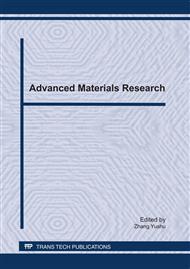p.231
p.236
p.241
p.246
p.250
p.255
p.260
p.267
p.272
Dry Sliding Tribological Behavior of Continuous Ceramic Frames Reinforced Aluminum-Based Composites
Abstract:
The tribological behavior of continuous frame ceramic reinforced Al-based alloy against Cr12 steel has been studied with oscillating dry friction and wear tester under the testing conditions of 70°C, 270°C, and 30min, and the load range is from 40N to 100N. The analysis of experimental results show that it is characteristic of abrasive wear and oxidation wear mechanisms for continuous ceramic/Al-7075 composites. The friction resistance of comb ceramic reinforced composite is better than foam ceramic reinforced composite, since the former is with continuous ceramic frame on the worn surface while the latest is with discontinuous hard convex on the plane; and the metal matrix filling in comb ceramic is not continuous in 3-D space, which leads to the deterioration of thermal metal softening at high temperature. Therefore, the composite reinforced by 2-D comb ceramic exhibits better high-temperature friction resistance than the one reinforced by 3-D foam ceramic.
Info:
Periodical:
Pages:
250-254
Citation:
Online since:
February 2011
Price:
Сopyright:
© 2011 Trans Tech Publications Ltd. All Rights Reserved
Share:
Citation:


